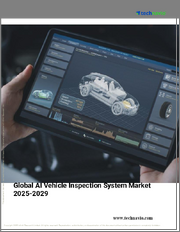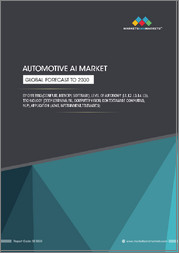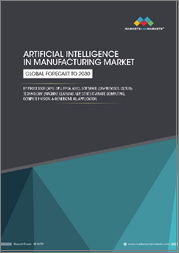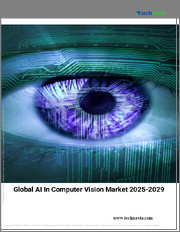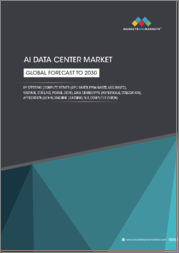
|
시장보고서
상품코드
1587377
감시용 컴퓨터 비전 시장 : 제품, 구성요소별 - 세계 예측(2025-2030년)Computer Vision in Surveillance Market by Product (PC-Based Vision, Smart Cameras-Based Vision), Component (Hardware, Software) - Global Forecast 2025-2030 |
||||||
감시용 컴퓨터 비전 시장의 2023년 시장 규모는 33억 3,000만 달러로 평가되었습니다. 2024년에는 36억 4,000만 달러에 이를 것으로 예측되며, CAGR 9.51%로 성장하여 2030년에는 63억 달러에 이를 것으로 예측됩니다.
감시용 컴퓨터 비전은 컴퓨터가 카메라의 시각적 데이터를 해석하여 환경을 모니터링하고 분석할 수 있도록 하는 알고리즘과 기술을 응용한 것입니다. 이 첨단 감시 기술은 정부, 소매, 운송, 의료 등 다양한 분야에서 증가하는 보안 강화, 업무 효율성 및 자동화 요구에 부응하고 있습니다. 감시용 컴퓨터 비전의 필요성은 실시간 모니터링, 인적 오류 감소, 방대한 양의 시각적 데이터를 효율적으로 관리할 수 있는 기능에서 기인합니다. 주요 응용 분야로는 자동 위협 감지, 얼굴 인식, 교통 모니터링, 의심스러운 행동 분석 등이 있습니다. 최종 용도는 도시 안전을 위해 고도의 감시를 활용하는 스마트 시티부터 부지 및 자산의 안전을 확보하려는 민간 기업까지 다양한 구현이 이루어지고 있습니다. 시장 성장의 원동력은 AI와 머신러닝의 발전, 하드웨어 비용의 하락, 보안에 대한 관심 증가입니다. 그러나 프라이버시 문제, 데이터 보호 규제, 높은 초기 투자비용이 큰 도전이 되고 있으며, AI 기반 분석, 엣지 컴퓨팅, 실시간 지능형 통찰력을 제공하는 IoT의 통합과 같은 혁신에 잠재적인 기회가 있습니다. 기업들은 이러한 기회를 잡기 위해 AI 스타트업과의 제휴를 모색하고 클라우드 기반 모니터링 솔루션에 투자해야 합니다. 윤리적 우려와 규제 복잡성 등의 제약이 있지만, 스마트 인프라 증가 추세는 이상 감지 및 예측 분석과 같은 분야에서 선구적인 연구를 위한 비옥한 토양을 제공합니다. 이 시장은 역동적이며, 급속한 기술 발전과 경쟁 압력으로 인해 기업이 지속적인 혁신을 추구하고 있는 역동적인 시장입니다. 비즈니스 성장을 원하는 기업은 프라이버시 중심의 솔루션을 개발하고 기존 시스템과의 상호운용성을 강화하는 데 집중해야 합니다. 전반적으로, 감시용 컴퓨터 비전은 보안 시스템에 혁명을 일으킬 수 있는 엄청난 잠재력을 가지고 있지만, 이를 극복하기 위해서는 전략적인 적응과 선견지명이 필요합니다.
| 주요 시장 통계 | |
|---|---|
| 기준 연도(2023년) | 33억 3,000만 달러 |
| 예측 연도(2024년) | 36억 4,000만 달러 |
| 예측 연도(2030년) | 63억 달러 |
| CAGR(%) | 9.51% |
시장 역학: 빠르게 진화하는 감시용 컴퓨터 비전 시장의 주요 시장 인사이트를 공개합니다.
감시용 컴퓨터 비전 시장은 수요 및 공급의 역동적인 상호작용에 의해 변화하고 있습니다. 이러한 시장 역학의 진화를 이해함으로써 기업은 정보에 입각한 투자 결정, 전략적 의사결정, 새로운 비즈니스 기회를 포착할 수 있습니다. 이러한 트렌드를 종합적으로 파악함으로써 기업은 정치적, 지리적, 기술적, 사회적, 경제적 영역에 걸친 다양한 리스크를 완화하고, 소비자 행동과 그것이 제조 비용 및 구매 동향에 미치는 영향을 보다 명확하게 이해할 수 있습니다.
- 시장 성장 촉진요인
- 제조업, 군 등 분야에서의 채용 증가
- 딥러닝 뉴럴 네트워크의 통합 확대
- 홈 스마트 보안 기술에 대한 지출 증가
- 시장 성장 억제요인
- 고가의 소프트웨어 및 구성 요소 비용
- 시장 기회
- 모니터링 분야에서 블록체인 기술의 급속한 발전
- 이미지 처리 및 분석을 위한 클라우드 기반 플랫폼으로의 전환 증가
- 시장 과제
- 통합의 복잡성에 따른 과제
Portre's Five Forces: 감시용 컴퓨터 비전 시장 탐색을 위한 전략적 도구
Portre's Five Forces 프레임워크는 시장 상황경쟁 구도를 이해하는 중요한 도구입니다. Portre's Five Forces 프레임워크는 기업의 경쟁력을 평가하고 전략적 기회를 탐색할 수 있는 명확한 방법을 제공합니다. 이 프레임워크는 기업이 시장 내 세력도를 평가하고 신규 사업의 수익성을 판단하는 데 도움이 됩니다. 이러한 통찰력을 통해 기업은 강점을 활용하고, 약점을 해결하고, 잠재적인 도전을 피하고, 보다 강력한 시장 포지셔닝을 확보할 수 있습니다.
PESTLE 분석 : 감시용 컴퓨터 비전 시장의 외부 영향 파악
외부 거시 환경 요인은 감시용 컴퓨터 비전 시장의 성과 역학을 형성하는 데 있어 매우 중요한 역할을 합니다. 정치적, 경제적, 사회적, 기술적, 법적, 환경적 요인에 대한 분석은 이러한 영향을 탐색하는 데 필요한 정보를 제공하며, PESTLE 요인을 조사함으로써 기업은 잠재적 위험과 기회를 더 잘 이해할 수 있습니다. 이러한 분석을 통해 기업은 규제, 소비자 선호도, 경제 동향의 변화를 예측하고 선제적이고 능동적인 의사결정을 내릴 준비를 할 수 있습니다.
시장 점유율 분석 모니터링용 컴퓨터 비전 시장에서경쟁 구도 파악
감시용 컴퓨터 비전 시장의 상세한 시장 점유율 분석을 통해 벤더의 성과를 종합적으로 평가할 수 있습니다. 기업은 수익, 고객 기반, 성장률과 같은 주요 지표를 비교하여 경쟁적 위치를 파악할 수 있습니다. 이 분석은 시장의 집중화, 단편화, 통합의 추세를 파악할 수 있으며, 공급업체는 치열한 경쟁 속에서 자신의 입지를 강화할 수 있는 전략적 의사결정을 내리는 데 필요한 통찰력을 얻을 수 있습니다.
FPNV 포지셔닝 매트릭스 모니터링용 컴퓨터 비전 시장에서의 벤더 성과 평가
FPNV 포지셔닝 매트릭스는 감시용 컴퓨터 비전 시장에서 벤더를 평가할 수 있는 중요한 도구입니다. 이 매트릭스를 통해 비즈니스 조직은 벤더의 비즈니스 전략과 제품 만족도를 기반으로 평가하여 목표에 부합하는 정보에 입각한 의사결정을 내릴 수 있으며, 4개의 사분면으로 벤더를 명확하고 정확하게 세분화하여 전략 목표에 가장 적합한 파트너와 솔루션을 식별할 수 있습니다. 전략 목표에 가장 적합한 파트너와 솔루션을 식별할 수 있습니다.
감시용 컴퓨터 비전 시장에서 성공하기 위한 전략 분석 및 권장 사항
감시용 컴퓨터 비전 시장 전략 분석은 세계 시장에서의 입지를 강화하고자 하는 기업에게 필수적입니다. 주요 자원, 역량 및 성과 지표를 검토함으로써 기업은 성장 기회를 식별하고 개선할 수 있습니다. 이러한 접근 방식을 통해 기업은 경쟁 환경의 도전을 극복하고 새로운 비즈니스 기회를 활용하여 장기적인 성공을 거둘 수 있도록 준비할 수 있습니다.
이 보고서는 주요 관심 분야를 포괄하는 시장에 대한 종합적인 분석을 제공합니다.
1. 시장 침투도 : 현재 시장 환경의 상세한 검토, 주요 기업의 광범위한 데이터, 시장 도달 범위 및 전반적인 영향력 평가.
2. 시장 개척도: 신흥 시장에서의 성장 기회를 파악하고, 기존 분야의 확장 가능성을 평가하며, 미래 성장을 위한 전략적 로드맵을 제공합니다.
3. 시장 다각화 : 최근 제품 출시, 미개척 지역, 업계의 주요 발전, 시장을 형성하는 전략적 투자를 분석합니다.
4. 경쟁 평가 및 정보 : 경쟁 구도를 철저히 분석하여 시장 점유율, 사업 전략, 제품 포트폴리오, 인증, 규제 당국의 승인, 특허 동향, 주요 기업의 기술 발전 등을 검토합니다.
5. 제품 개발 및 혁신 : 미래 시장 성장을 가속할 것으로 예상되는 첨단 기술, 연구 개발 활동 및 제품 혁신을 강조합니다.
이해관계자들이 충분한 정보를 바탕으로 의사결정을 내릴 수 있도록 다음과 같은 중요한 질문에 대한 답변도 제공합니다.
1. 현재 시장 규모와 향후 성장 전망은?
2. 최고의 투자 기회를 제공하는 제품, 부문, 지역은?
3. 시장을 형성하는 주요 기술 동향과 규제의 영향은?
4. 주요 벤더의 시장 점유율과 경쟁 포지션은?
5.벤더 시장 진입 및 철수 전략의 원동력이 되는 수익원과 전략적 기회는 무엇인가?
목차
제1장 서문
제2장 조사 방법
제3장 주요 요약
제4장 시장 개요
제5장 시장 인사이트
- 시장 역학
- 성장 촉진요인
- 성장 억제요인
- 기회
- 과제
- 시장 세분화 분석
- Porter의 Five Forces 분석
- PESTEL 분석
- 정치
- 경제
- 사회
- 기술
- 법률
- 환경
제6장 감시용 컴퓨터 비전 시장 : 제품별
- PC 기반 비전
- 스마트 카메라 기반 비전
제7장 감시용 컴퓨터 비전 시장 : 컴포넌트별
- 하드웨어
- 카메라
- 프레임 그래버
- 이미지 센서
- LED 조명
- 광학
- 프로세서
- 소프트웨어
제8장 아메리카의 감시용 컴퓨터 비전 시장
- 아르헨티나
- 브라질
- 캐나다
- 멕시코
- 미국
제9장 아시아태평양의 감시용 컴퓨터 비전 시장
- 호주
- 중국
- 인도
- 인도네시아
- 일본
- 말레이시아
- 필리핀
- 싱가포르
- 한국
- 대만
- 태국
- 베트남
제10장 유럽, 중동 및 아프리카의 감시용 컴퓨터 비전 시장
- 덴마크
- 이집트
- 핀란드
- 프랑스
- 독일
- 이스라엘
- 이탈리아
- 네덜란드
- 나이지리아
- 노르웨이
- 폴란드
- 카타르
- 러시아
- 사우디아라비아
- 남아프리카공화국
- 스페인
- 스웨덴
- 스위스
- 터키
- 아랍에미리트(UAE)
- 영국
제11장 경쟁 구도
- 시장 점유율 분석, 2023
- FPNV 포지셔닝 매트릭스, 2023
- 경쟁 시나리오 분석
- 전략 분석과 제안
기업 리스트
- Baumer Ltd.
- CEVA, Inc.
- Chooch Intelligence Technologies Co.
- Cognex Corporation
- DeepX
- Intel Corporation
- International Business Machine Corporation
- Keyence Corporation
- NATIONAL INSTRUMENTS CORP.
- OMRON Corporation
- PIXELINK, Inc.
- Sony Semiconductor Solutions by Sony Corporation
- Teledyne Technologies Company
- Texas Instruments Incorporated
- Tordivel AS
The Computer Vision in Surveillance Market was valued at USD 3.33 billion in 2023, expected to reach USD 3.64 billion in 2024, and is projected to grow at a CAGR of 9.51%, to USD 6.30 billion by 2030.
Computer vision in surveillance is the application of algorithms and technologies that enable computers to interpret visual data from cameras to monitor and analyze environments. This advanced surveillance technique meets the growing need for enhanced security, operational efficiency, and automation in various sectors such as government, retail, transportation, and healthcare. The necessity of computer vision in surveillance stems from its ability to provide real-time monitoring, reduce human error, and manage vast amounts of visual data effectively. Key applications include automated threat detection, facial recognition, traffic monitoring, and suspicious behavior analysis. The end-use scope is expansive, with implementations ranging from smart cities, which utilize advanced monitoring for urban safety, to private enterprises seeking to secure premises and assets. Market growth is driven by advancements in AI and machine learning, declining costs of hardware, and heightened security concerns. However, privacy issues, data protection regulations, and the high initial investment required pose significant challenges. Potential opportunities lie in innovations like AI-driven analytics, edge computing, and the integration of IoT to provide real-time, intelligent insights. Companies should explore partnerships with AI startups and invest in cloud-based surveillance solutions to seize these opportunities. Despite limitations such as ethical concerns and regulatory complexities, the rising trend of smart infrastructure provides a fertile ground for pioneering research in areas like anomaly detection and predictive analytics. The market is dynamic, characterized by rapid technological advancements and competitive pressures, pushing entities to innovate continuously. Firms aiming for business growth should focus on developing privacy-centric solutions and enhancing interoperability with existing systems. Overall, there's immense potential for computer vision in surveillance to revolutionize security systems, although navigating its challenges requires strategic adaptation and foresight.
| KEY MARKET STATISTICS | |
|---|---|
| Base Year [2023] | USD 3.33 billion |
| Estimated Year [2024] | USD 3.64 billion |
| Forecast Year [2030] | USD 6.30 billion |
| CAGR (%) | 9.51% |
Market Dynamics: Unveiling Key Market Insights in the Rapidly Evolving Computer Vision in Surveillance Market
The Computer Vision in Surveillance Market is undergoing transformative changes driven by a dynamic interplay of supply and demand factors. Understanding these evolving market dynamics prepares business organizations to make informed investment decisions, refine strategic decisions, and seize new opportunities. By gaining a comprehensive view of these trends, business organizations can mitigate various risks across political, geographic, technical, social, and economic domains while also gaining a clearer understanding of consumer behavior and its impact on manufacturing costs and purchasing trends.
- Market Drivers
- Rising adoption in sectors such as manufacturing and military
- Growing integration of deep learning neural networks
- Increasing spending for home smart security technologies
- Market Restraints
- High cost of the software and components
- Market Opportunities
- Rapid advancements in blockchain technology in surveillance
- Increasing shift to cloud-based platforms for image processing and analytics
- Market Challenges
- Challenges associated with integration complexities
Porter's Five Forces: A Strategic Tool for Navigating the Computer Vision in Surveillance Market
Porter's five forces framework is a critical tool for understanding the competitive landscape of the Computer Vision in Surveillance Market. It offers business organizations with a clear methodology for evaluating their competitive positioning and exploring strategic opportunities. This framework helps businesses assess the power dynamics within the market and determine the profitability of new ventures. With these insights, business organizations can leverage their strengths, address weaknesses, and avoid potential challenges, ensuring a more resilient market positioning.
PESTLE Analysis: Navigating External Influences in the Computer Vision in Surveillance Market
External macro-environmental factors play a pivotal role in shaping the performance dynamics of the Computer Vision in Surveillance Market. Political, Economic, Social, Technological, Legal, and Environmental factors analysis provides the necessary information to navigate these influences. By examining PESTLE factors, businesses can better understand potential risks and opportunities. This analysis enables business organizations to anticipate changes in regulations, consumer preferences, and economic trends, ensuring they are prepared to make proactive, forward-thinking decisions.
Market Share Analysis: Understanding the Competitive Landscape in the Computer Vision in Surveillance Market
A detailed market share analysis in the Computer Vision in Surveillance Market provides a comprehensive assessment of vendors' performance. Companies can identify their competitive positioning by comparing key metrics, including revenue, customer base, and growth rates. This analysis highlights market concentration, fragmentation, and trends in consolidation, offering vendors the insights required to make strategic decisions that enhance their position in an increasingly competitive landscape.
FPNV Positioning Matrix: Evaluating Vendors' Performance in the Computer Vision in Surveillance Market
The Forefront, Pathfinder, Niche, Vital (FPNV) Positioning Matrix is a critical tool for evaluating vendors within the Computer Vision in Surveillance Market. This matrix enables business organizations to make well-informed decisions that align with their goals by assessing vendors based on their business strategy and product satisfaction. The four quadrants provide a clear and precise segmentation of vendors, helping users identify the right partners and solutions that best fit their strategic objectives.
Strategy Analysis & Recommendation: Charting a Path to Success in the Computer Vision in Surveillance Market
A strategic analysis of the Computer Vision in Surveillance Market is essential for businesses looking to strengthen their global market presence. By reviewing key resources, capabilities, and performance indicators, business organizations can identify growth opportunities and work toward improvement. This approach helps businesses navigate challenges in the competitive landscape and ensures they are well-positioned to capitalize on newer opportunities and drive long-term success.
Key Company Profiles
The report delves into recent significant developments in the Computer Vision in Surveillance Market, highlighting leading vendors and their innovative profiles. These include Baumer Ltd., CEVA, Inc., Chooch Intelligence Technologies Co., Cognex Corporation, DeepX, Intel Corporation, International Business Machine Corporation, Keyence Corporation, NATIONAL INSTRUMENTS CORP., OMRON Corporation, PIXELINK, Inc., Sony Semiconductor Solutions by Sony Corporation, Teledyne Technologies Company, Texas Instruments Incorporated, and Tordivel AS.
Market Segmentation & Coverage
This research report categorizes the Computer Vision in Surveillance Market to forecast the revenues and analyze trends in each of the following sub-markets:
- Based on Product, market is studied across PC-Based Vision and Smart Cameras-Based Vision.
- Based on Component, market is studied across Hardware and Software. The Hardware is further studied across Cameras, Frame Grabbers, Image Sensors, LED Lighting, Optics, and Processors.
- Based on Region, market is studied across Americas, Asia-Pacific, and Europe, Middle East & Africa. The Americas is further studied across Argentina, Brazil, Canada, Mexico, and United States. The United States is further studied across California, Florida, Illinois, New York, Ohio, Pennsylvania, and Texas. The Asia-Pacific is further studied across Australia, China, India, Indonesia, Japan, Malaysia, Philippines, Singapore, South Korea, Taiwan, Thailand, and Vietnam. The Europe, Middle East & Africa is further studied across Denmark, Egypt, Finland, France, Germany, Israel, Italy, Netherlands, Nigeria, Norway, Poland, Qatar, Russia, Saudi Arabia, South Africa, Spain, Sweden, Switzerland, Turkey, United Arab Emirates, and United Kingdom.
The report offers a comprehensive analysis of the market, covering key focus areas:
1. Market Penetration: A detailed review of the current market environment, including extensive data from top industry players, evaluating their market reach and overall influence.
2. Market Development: Identifies growth opportunities in emerging markets and assesses expansion potential in established sectors, providing a strategic roadmap for future growth.
3. Market Diversification: Analyzes recent product launches, untapped geographic regions, major industry advancements, and strategic investments reshaping the market.
4. Competitive Assessment & Intelligence: Provides a thorough analysis of the competitive landscape, examining market share, business strategies, product portfolios, certifications, regulatory approvals, patent trends, and technological advancements of key players.
5. Product Development & Innovation: Highlights cutting-edge technologies, R&D activities, and product innovations expected to drive future market growth.
The report also answers critical questions to aid stakeholders in making informed decisions:
1. What is the current market size, and what is the forecasted growth?
2. Which products, segments, and regions offer the best investment opportunities?
3. What are the key technology trends and regulatory influences shaping the market?
4. How do leading vendors rank in terms of market share and competitive positioning?
5. What revenue sources and strategic opportunities drive vendors' market entry or exit strategies?
Table of Contents
1. Preface
- 1.1. Objectives of the Study
- 1.2. Market Segmentation & Coverage
- 1.3. Years Considered for the Study
- 1.4. Currency & Pricing
- 1.5. Language
- 1.6. Stakeholders
2. Research Methodology
- 2.1. Define: Research Objective
- 2.2. Determine: Research Design
- 2.3. Prepare: Research Instrument
- 2.4. Collect: Data Source
- 2.5. Analyze: Data Interpretation
- 2.6. Formulate: Data Verification
- 2.7. Publish: Research Report
- 2.8. Repeat: Report Update
3. Executive Summary
4. Market Overview
5. Market Insights
- 5.1. Market Dynamics
- 5.1.1. Drivers
- 5.1.1.1. Rising adoption in sectors such as manufacturing and military
- 5.1.1.2. Growing integration of deep learning neural networks
- 5.1.1.3. Increasing spending for home smart security technologies
- 5.1.2. Restraints
- 5.1.2.1. High cost of the software and components
- 5.1.3. Opportunities
- 5.1.3.1. Rapid advancements in blockchain technology in surveillance
- 5.1.3.2. Increasing shift to cloud-based platforms for image processing and analytics
- 5.1.4. Challenges
- 5.1.4.1. Challenges associated with integration complexities
- 5.1.1. Drivers
- 5.2. Market Segmentation Analysis
- 5.3. Porter's Five Forces Analysis
- 5.3.1. Threat of New Entrants
- 5.3.2. Threat of Substitutes
- 5.3.3. Bargaining Power of Customers
- 5.3.4. Bargaining Power of Suppliers
- 5.3.5. Industry Rivalry
- 5.4. PESTLE Analysis
- 5.4.1. Political
- 5.4.2. Economic
- 5.4.3. Social
- 5.4.4. Technological
- 5.4.5. Legal
- 5.4.6. Environmental
6. Computer Vision in Surveillance Market, by Product
- 6.1. Introduction
- 6.2. PC-Based Vision
- 6.3. Smart Cameras-Based Vision
7. Computer Vision in Surveillance Market, by Component
- 7.1. Introduction
- 7.2. Hardware
- 7.2.1. Cameras
- 7.2.2. Frame Grabbers
- 7.2.3. Image Sensors
- 7.2.4. LED Lighting
- 7.2.5. Optics
- 7.2.6. Processors
- 7.3. Software
8. Americas Computer Vision in Surveillance Market
- 8.1. Introduction
- 8.2. Argentina
- 8.3. Brazil
- 8.4. Canada
- 8.5. Mexico
- 8.6. United States
9. Asia-Pacific Computer Vision in Surveillance Market
- 9.1. Introduction
- 9.2. Australia
- 9.3. China
- 9.4. India
- 9.5. Indonesia
- 9.6. Japan
- 9.7. Malaysia
- 9.8. Philippines
- 9.9. Singapore
- 9.10. South Korea
- 9.11. Taiwan
- 9.12. Thailand
- 9.13. Vietnam
10. Europe, Middle East & Africa Computer Vision in Surveillance Market
- 10.1. Introduction
- 10.2. Denmark
- 10.3. Egypt
- 10.4. Finland
- 10.5. France
- 10.6. Germany
- 10.7. Israel
- 10.8. Italy
- 10.9. Netherlands
- 10.10. Nigeria
- 10.11. Norway
- 10.12. Poland
- 10.13. Qatar
- 10.14. Russia
- 10.15. Saudi Arabia
- 10.16. South Africa
- 10.17. Spain
- 10.18. Sweden
- 10.19. Switzerland
- 10.20. Turkey
- 10.21. United Arab Emirates
- 10.22. United Kingdom
11. Competitive Landscape
- 11.1. Market Share Analysis, 2023
- 11.2. FPNV Positioning Matrix, 2023
- 11.3. Competitive Scenario Analysis
- 11.4. Strategy Analysis & Recommendation
Companies Mentioned
- 1. Baumer Ltd.
- 2. CEVA, Inc.
- 3. Chooch Intelligence Technologies Co.
- 4. Cognex Corporation
- 5. DeepX
- 6. Intel Corporation
- 7. International Business Machine Corporation
- 8. Keyence Corporation
- 9. NATIONAL INSTRUMENTS CORP.
- 10. OMRON Corporation
- 11. PIXELINK, Inc.
- 12. Sony Semiconductor Solutions by Sony Corporation
- 13. Teledyne Technologies Company
- 14. Texas Instruments Incorporated
- 15. Tordivel AS






